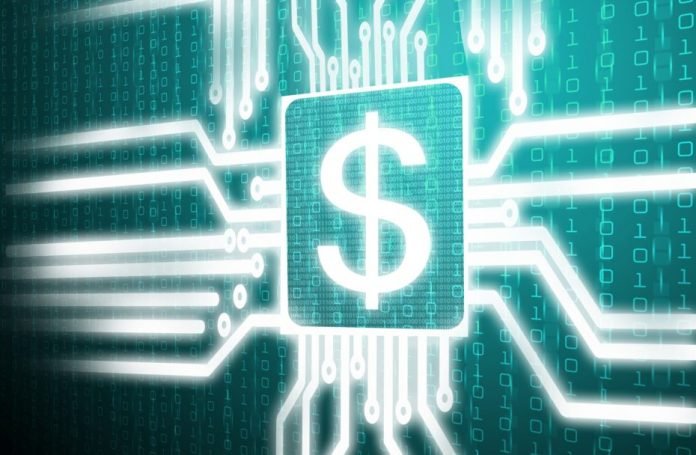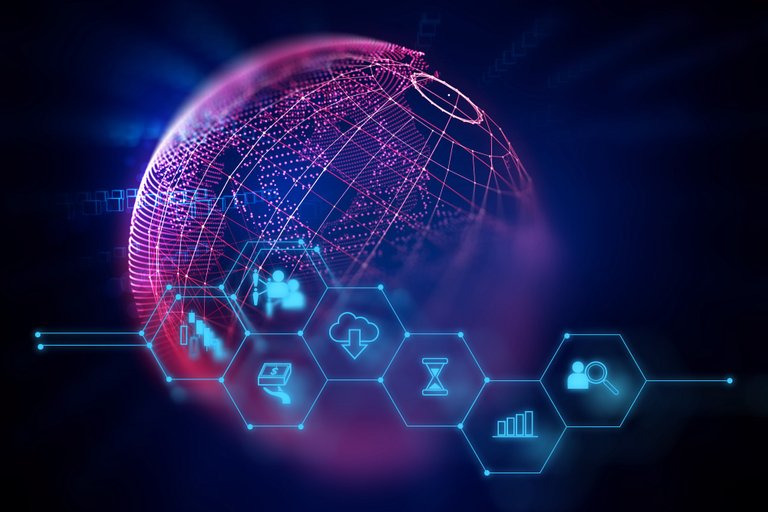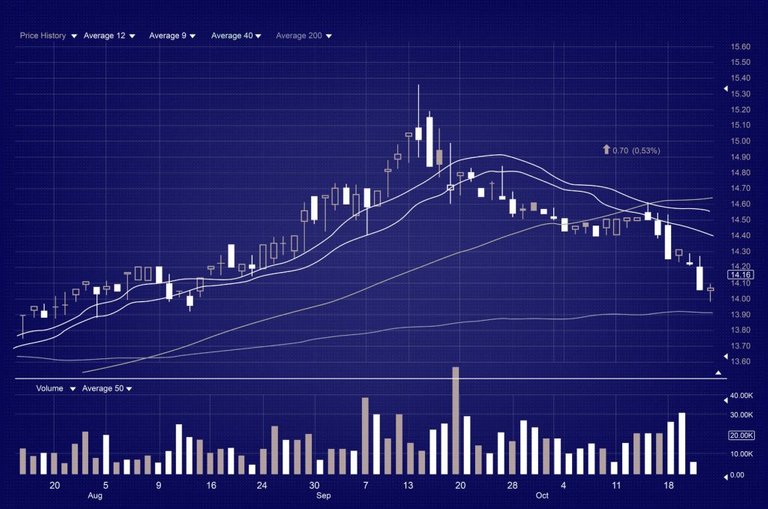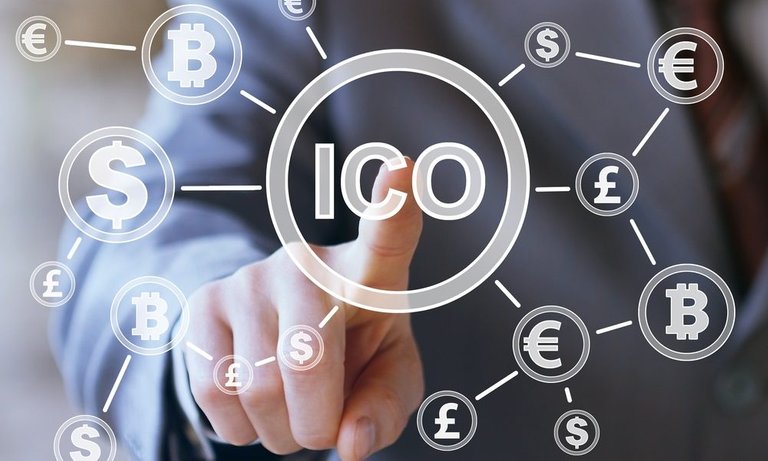Cyber•Fund is introducing a series of publications that provide an overview of some of the best speaker topics we’ve hosted at our meetups. Our third guest speaker during our summer meetup session Konstantin Lomashuk—co-founder of cyber•Fund—gave a tell-all about how one might go about investing in blockchain assets.

Image via Shuttershock
Lomashuk started out by giving a brief intro about cyber•Fund and the first blockchain-traded fund, Satoshi•Fund. In 2015 cyber•Fund conducted the Cybernetic Economy Report, which drew attention to Bitcoin and similar assets valued at more than 100,000 USD. The report found that a large number of new assets were issued on the blockchain. The blockchain is a decentralized database where we can consider new types of assets such as Bitcoin. Since then cyber•Fund has raised investments, Bitcoin increased by 745% and Satoshi•Fund grew by 11,000%.
Criteria for Blockchain Assets

Image via Shuttershock
According to Lomashuk, “the criteria for blockchain assets is pretty simple, and the assets you invest in must fully comply due to the high level of fraud. This market is still young and does not have any regulation or established rules.” The following criteria exist:
Token Availability
Arguably the most important, a token is a unit of measure that can be shared in a project, asset or electronic signature.
Absence of the Emittent
An important feature of decentralized and autonomous organizations, this issuer is present at the moment of an ICO. In the case of using a smart contract, once it is published, different logic is used to issue tokens. There are enormous risks present if a person or group of people can affect to this logic. Satoshi•Fund only invests in assets without such risks.
Autonomy
Independence from other agents, meaning that when a project is autonomous, it can not be influenced.
Decentralization
Thanks to decentralization it became possible to devise and create autonomous projects without any emittent or the risk of closing the project in case of someone’s departure. A pinnacle example of this is Bitcoin, which is run by a large population of miners and users around the world. Lomashuk used the analogy of Bitcoin being “like a corporation of a new format; it doesn’t have a legal entity, it is not centralized and the risks of users are much lower.” These risks are so much lower because there is code to be observed, as well as additional mechanisms of interaction.
Open Source Code
This code allows you to view the code of the project or program you are using. If the code is closed, you cannot check autonomy or decentralization. In the case of closed code you trust only the founders of the project, but Satoshi•Fund prefers not to invest in such projects.
Market Liquidity
Many venture capitalists are interested in the cryptocurrency market due its’ liquidity since the creation of the token. The token is traded and transferred right from the issue, spurring the rapid development of projects. For example, Bitcoin, Ethereum, Aurum and Factum all use the crowdsale format. Bitcoin is an exception to this list because it was created using mining. These projects continue to grow at a much greater rate because people are able to collaboratively influence them, in addition to the accessing worldwide capital.
Investing in a Project

Image via Shuttershock
Lomashuk and the team at cyber•Fund examine a few key components before investing in any project.
The Project Team
Take the DAO project into consideration; a smart contract raised 100 million USD and was hacked shortly after. After this incident a great number of founders began to support the idea of hardforks. This is the exact type of scenario where the team could affect the viability of a project.
Token Distribution
It is important to examine the distribution of tokens and the model of their issue. This is arguably one of the most crucial aspects of a project because token creation urges people to interact, develop and work with project data. In other words, it involves the creation of an entirely new ecosystem.
Transparency
The transparency of the ICO is also extremely important. Transparency means the opportunity to see the funds, the ways of raising them and the addresses. You need to see whether a market valuation was actually carried out because when a project goes live, it makes a public offering so the market can evaluate the project. The only problem for the market arises if it is impossible to audit a project.
Compound Monthly Growth Rate (CMGR)
Since its’ registration in 2010 Bitcoin grows by 12.5% every month, and Ethereum grows by 23.9%. New projects like Melon Port, First Blood, Singler DTV and Golos.io show higher growth rates. Naturally their growth may slightly decrease, but this shows that these projects can grow faster than the current economy. This is possible due to the architecture of such projects: it is open, accessible and thereby motivates investors to develop and improve them.
Whitepaper
The whitepaper is the technical proof of the company’s theory; a hypothesis that is planning to be realized.
Business Model
The token has to include a business model. Bitcoin was created in 2009, but only consisted of a whitepaper sent to the best cryptographers in the world. The creator made a protocol and program code that began to develop like an organism. Soon thereafter, people went to buy cards, made transactions and there first appeared sellers who began to take Bitcoins and exchange them. A single program written almost 10 years ago spurred the development of an entire industry that continues to motivate individuals due to the inherent business model.
Code Availability and MVP
The team examines the availability of the project code and the MVP (minimum viable product). Many projects do not have open source code and only offer a best case scenario. Despite the large amount of “beautiful picture” projects, the industry continues to develop and cyber•Fund continues to invest. Any project will include certain roles such as: developers, communities, experts and developing business projects. Cyber•Fund helps these projects at each of these stages, especially when it comes to investments.
Satoshi•Pie
Satoshi•Pie is one of the most interesting products on the market created by the world’s first blockchain fund, Satoshi•Fund. The logic is simple: they created a secure fund where all investments are stored on multi-signature wallets. Since all the money is on the blockchain, this ensures it can be easily controlled and audited. Each of the assets is a blockchain asset. Satoshi•Fund chose a market they were experienced investing in and began to give the opportunity for everyone to check the availability of funds. They also ensure high profitability because they invest in blockchain systems. They analyze and conduct due-diligence before everyone else because they know many of the projects personally. The product is completely liquid and you can enter or leave the market at any time. They provide a differentiated portfolio, so if you want to buy a piece of the economy you only need to make investments in order to get the entire portfolio in a set with the best managers in the market.
Lomashuk proceeded his presentation with an open forum for the crowd to ask any burning questions they had.
What is an ICO?
An ICO, or initial coin offering, is a public offering of coins followed by the creation of a decentralized project. Thanks to ICOs the market develops quite swiftly and it is much easier to attract new investors. ICOs are less expensive and more effective, and the main reason people invest in them is the benefit. Several types of coin distribution exist. For example, hard cap limits the amount of investments collected, and if the project is successful, such ICOs finish almost instantaneously. Many investors believe these projects are changing the world of venture capital as we know it because you receive completely liquid assets.
Selling shares on the ICO?
During an ICO you can sell your shares, and you can see such solutions in Switzerland and Singapore where the holders receive dividends.
Crowdfunding, Crowdinvesting, Crowdsale and ICO...What’s the difference?
Most use these terms interchangeably, but it is important to distinguish the difference between them.
Crowdfunding
You invest on Kickstarter and do not get any tokens in return.
Crowdinvesting
You invest in the project and expect something in return.
ICO and Crowdsale
You invest and get tokens in return, however, the team does not bear any responsibility. This is due to the fact that there is no regulation in this sphere. Every project launching an ICO has inherent risks due to the possibility of legislation in favor of investors.
What is a token?
A token is a unit of measure. It can be as shares, electronic signatures, fuel for blockchain assets, cryptocurrency or even a share in a company.
What is the main innovation of the ICO?
From the very first moment you become a public person and get an opportunity to receive funds from around the world. You can also attract money to the project from your followers. Another crucial part of the ICO innovation is the operational cost. You can simply create a concept, write a paper and put everything in the network without leaving home.
Should I invest in an ICO?
If you want to create something useful, change the world and really feel that you can, then why not? Since this is a pretty simple way of investing, you need to understand that the responsibility will only increase once you enter the open market and become public.
What are the risks for investors in the ICO?
The risks are quite unclear at this moment in time. As at any time, there may appear a VAT for a purchase in the ICO, so you should understand that the team does not bear any risks; you assume the risk when investing.
How do you tie a token to your business?
Among all ICOs, only 10% of projects need a token. The token can be tied to everything, but when we consider decentralized and stand-alone projects, the token should have a business economy and a particularly stated meaning.
What will happen to the ICO industry?
The capitalization of blockchain assets increases quite swiftly and as a result we can see new capital inflows. It should be understood that like any other industry, the ICO market will face a series of ups and downs.

Image via Shuttershock
What projects should be created?
A project like DAO Online Casino is a great example, however, it is a casino on the blockchain and there are certain problems inherent to the gambling sphere. The main problem is that people cannot check the honesty of the casino, but thanks to smart contract technology you can easily audit something like the logic of Blackjack roulette. Therefore, such projects can be more efficient since there is the opportunity to create a protocol.
Cyber•Fund also invested in AeroLab: a project that is developing the robot economy. It is their strongly held belief that in the future many processes will become automated and robots will act as a network of agents making all the decisions by themselves. In this case people will also have the role of focusing the drones in order to understand people’s needs.
There are a multitude of interesting projects like Aragon; they are creating a jurisdiction on blockchain. They are engaged in the development of software and a set of smart contracts you can use to create a decentralized or conventional company. This hypothetical company is where the blockchain is the register-keeper, so the blockchain is a guarantee of your digital information. For example, when cyber•Fund launched the social network Golos.io, they guarantee the right to your digital personality.
To sum it up, all projects can be divided in two parts: the creation of the databases (Bitcoin or Ethereum) and the applications on the blockchain. The market keeps developing as it has access to capital from around the world. Likewise, technology is innovative and the guarantees are much higher for people holding digital assets. Lomashuk and the analysts at Cyber•Fund think that “there may be some decline over the course of the next two years, but after the market will see growth tenfold. If people have the possibility of a minimum social income, then of course they will continue to exponentially improve and develop the economy.
For more information please contact: [email protected]
Hi, great post, worth a follow. Looking forward to some more of your stuff.